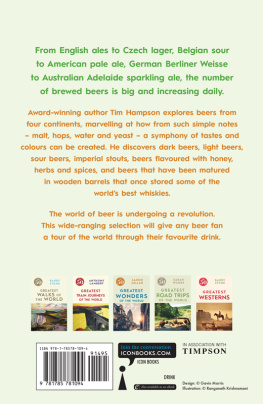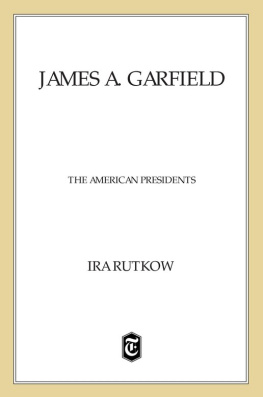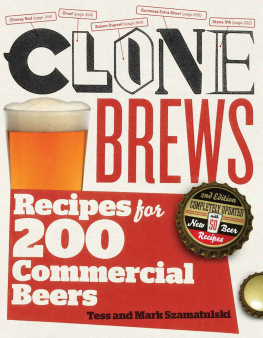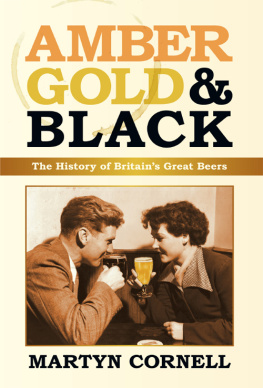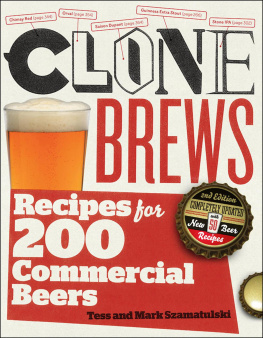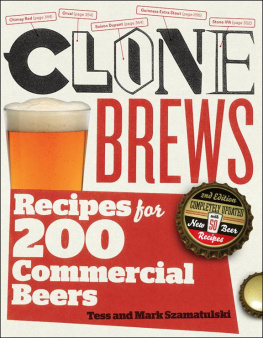| Transcriber's Note | This title has several large tables that may not always display well. For reference purposes, there are links to cleaned up scans for these tables. |
UNITED STATES DEPARTMENT OF AGRICULTURE
BULLETIN No. 493 Contribution from the Bureau of Chemistry
CARL L. ALSBERG, Chief
| logo |
Washington, D. C. PROFESSIONAL PAPER March 21, 1917
A STUDY OF AMERICAN BEERS AND ALES.
By L. M. Tolman , Chief, Central Inspection District, and J. Garfield Riley , Assistant Chemist, Food and Drug Inspection Laboratory, New York, N. Y.
CONTENTS.
Page.
Introduction
Method of undertaking the investigation
Methods of analysis
Results of analysis
Effect of raw materials used upon composition of the finished brew
Conclusions
INTRODUCTION.
The investigation, the results of which are reported in this bulletin, was undertaken for the purpose of securing information in regard to the composition of brewery products made in this country. The main object of this investigation was to find, if possible, a means of distinguishing beers and ales made entirely from malt from those made from malt together with other cereal products, such as rice, corn, and cerealin.
It was concluded, after looking into the literature, that in order to accomplish this purpose it would be necessary to collect a series of samples made from the various raw materials ordinarily used and make a study of the effect of these raw materials upon the composition of the finished product.
The investigation seemed desirable for the reason that practically all of the existing data related to foreign beers, in the preparation of which a type of malt was used entirely different from that ordinarily used in the production of American beers. Furthermore, very few of the existing data relating either to foreign or domestic beers were based upon samples concerning which exact information was available in regard to the raw materials used in the wort.
METHOD OF UNDERTAKING THE INVESTIGATION.
It was felt that it would be wholly unsatisfactory to make this investigation by means of laboratory brewings on a small scale, as the results thus obtained would not show the true conditions, because it is not possible in the laboratory to duplicate exactly the mashing or fermenting processes actually used in a commercial way. It was decided, therefore, to attempt, with the cooperation of several breweries, to make this study under the exact conditions prevailing in commercial plants. Access was secured to several breweries making different types of products from various kinds of raw materials, under such conditions that it was possible to obtain a complete history of the beer through its various stages to the finished product. One of the writers (Riley) watched the method of manufacture during its whole process and obtained samples of the product at the various stages of manufacture. Thus, it was possible to procure finished samples with practically the same degree of certainty, as regards knowledge of composition and history, as would have been the case had they been prepared in the laboratory.
In three different breweries manufacturing a wide range of products samples of the wort and beer were obtained in this manner, the entire process of manufacture being studied in detail. A record showing the kind and amount of raw materials placed in the mash and in the cooker was made of the samples collected from these three breweries. A record also was kept of the time and temperature of each operation until the mash was ready to run into the kettle. The filtering and sparging the aeration of the wort, the kind and amount of yeast added, as well as the time and maximum temperature of the primary fermentation, also were noted. The course of the beer through the storage vats, chip casks, and filters to the racks was watched, and samples of the wort and of the beer in its various stages of production were collected and examined.
Washing the grains with hot water to remove the extract or valuable constituents as completely as possible.
Precipitation and uniting, in the form of flakes, of the coagulable albuminoids, leaving the liquid clear.
A filtering tank.
Percentage of solids in the liquor according to the Balling hydrometer.
Pitching is the operation of adding the yeast to the wort.
METHODS OF ANALYSIS.
The methods of analysis used were those given in Bulletin 107, revised (U. S. Dept. Agr., Bur. Chem.), pages 90-94, with the exception that the determination of phosphoric acid was made by the method used in fertilizer analysis (ibid., pp. 2-5), destroying the organic material in the beer by digestion with strong sulphuric acid and nitric acid and determining the phosphoric acid finally by the optional volumetric method (ibid., p. 4). The uranium acetate method given for beers was not used, for the reason that it was found to be exceedingly difficult to obtain accurate results on dark-colored beers.
Riley, in his report to the Association of Official Agricultural Chemists for the year 1913, stated that the method giving the most uniform results was that of ashing the beer with an excess of standard calcium acetate, and that while the moist combustion method in the hands of those familiar with it gave satisfactory results, the various collaborators working with the method did not get as uniform results as with the method of ashing with calcium acetate. J. Assoc. Off. Agr. Chemists 1 (1915), 138-143.
It was found in the estimation of dextrin by the Sachsse-Allihn method (ibid., p. 91) that there is an error in the method of calculation of the amount of dextrose formed from the amount of maltose in the original beer. Instead of multiplying the amount of maltose in the original beer by the factor 0.9, it should be multiplied by the factor 1.053, as 1 gram of anhydrous maltose yields, on hydrolysis, 1.053 grams of dextrose. The product is the quantity which should be subtracted from the total amount of dextrose found after hydrolysis. The extract in the beer was determined by use of the tables of Schultz and Ostermann (ibid., pp. 209-213). The same methods were used in the analyses of the worts as were used in the examination of the beers.
RESULTS OF ANALYSIS.
Tables I to IV contain the results of the analyses of the worts and finished fermented products obtained at the various breweries where this investigation was conducted, arranged so as to show readily the changes which took place during fermentation and, in a few cases, the changes which took place during storage. The results are all given in terms of grams per 100 cc, so that a direct comparison of the quantities of any particular ingredient in a definite volume of material may be made. The comparison of the grams per 100 cc of an ingredient in the wort, with the grams per 100 cc in the finished fermented product, is based on the assumption that there is no appreciable change in the volume of the wort during fermentation.
In Table I are given the results of the analyses of 7 malt worts and the beers produced from them. Table II contains the results of the analyses of 2 malt-and-rice worts and 2 malt-and-corn worts, and the beers produced from them. In Table III are given the results of the analyses of 4 porter worts and the finished porters produced from them. The results of the analyses of 9 ale worts and the finished ales are shown in Table IV. In these four tables the extract in the original wort has been calculated by multiplying the alcohol (expressed in terms of grams per 100 cc) by 2, and adding to the product the extract of the beer, porter, or ale (expressed in terms of grams per 100 cc). In the porter and ale worts a percentage of dextrose had been added as brewer's sugar. Since dextrose reduces more copper than does maltose in the determination of the sugars, in order to obtain the true percentage of total sugars it was necessary to calculate the amount of copper reduced by the known amount of dextrose present, and then to calculate the amount of maltose. The results thus obtained are given in Tables III and IV under the heading "Reducing sugars as anhydrous maltose."



